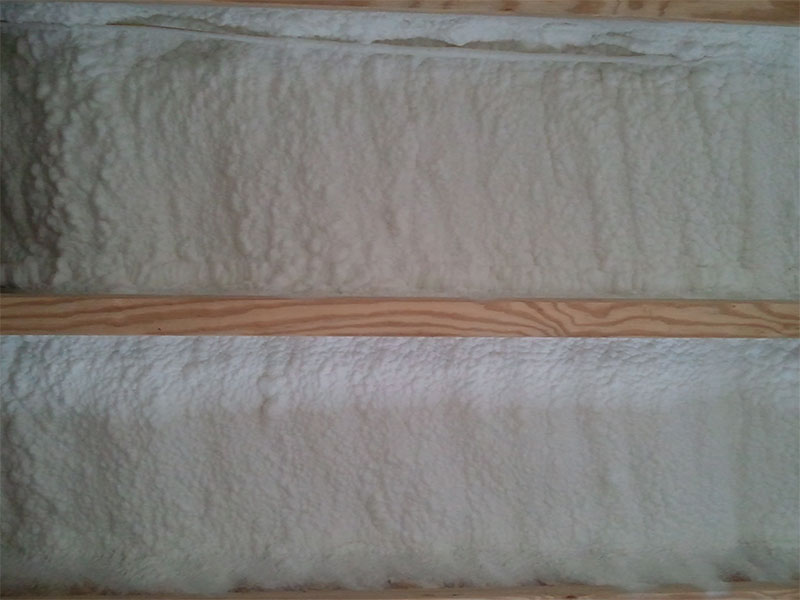Closed Cell Spray Foam
Closed cell spray foam (also known as 2 pound foam) has a density of about 2 pounds per cubic foot and an R-value of 6 to 6.5 per inch. Because it is a denser material, closed cell spray foam not only provides a vapor and water barrier to a home or structure, but also adds additional structural strength. Closed cell spray foam typically costs more than open cell spray foam.
Because the cells in closed foam spray have their own structure and don’t share any structure with other cells, the foam has a higher plastic content and less air. The industry standard for a spray foam to qualify as “closed cell” is that greater than 90% of the cells are closed.
Advantages of Closed Cell Spray Foam
While open cell and closed cell foams are both polyurethane based, the main difference between the two is that closed-cell foam is:
- Denser
- Two and a half inches of closed-cell foam have a permeance of 0.8 perm. Less water/air can pass through closed cell foam
- Heavier
- Because closed cell foam is denser, it provides added wall/structural strength. One place that open cell would be a better fit could be an attic or ceiling, due to weight.
- Provides better insulation and water barrier
- Although it is typically more material (and therefore more costly) than an open cell spray foam, closed cell foam is less permeable and more water resistant. This can prevent unwanted mold/moisture in hidden places.
Price Consideration
Although there are many advantages of having a closed spray foam insulation, the price is a drawback simply because there are more materials needed to create the denser insulation. Closed cell foam is more expensive per “R,”* so one can expect an R-10 of closed cell to be costlier than R-10 of open cell. There is more plastic used in closed cell, and the chemicals used for a blowing agent in closed cell foam is much more expensive than the water used in open cell foam. However, there are benefits of increased effectiveness and strength. The specialists at Ozark Foam Insealators are happy to review benefits with your needs.
*(R is the resistance to conductive heat flow is measured or rated in terms of its thermal resistance or R–value — the higher the R–value, the greater the insulating effectiveness.



Follow Us!